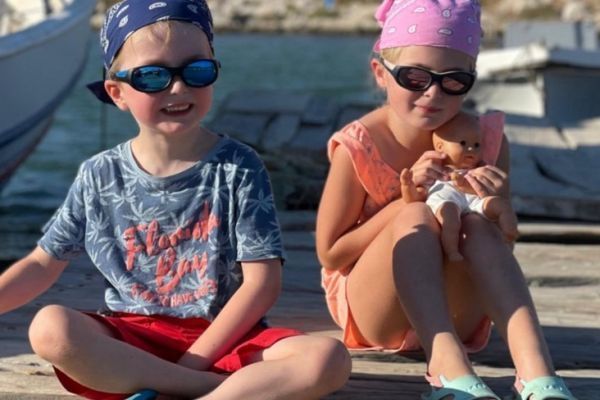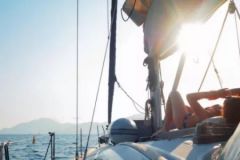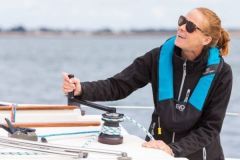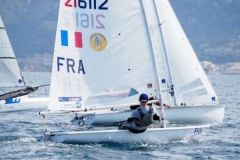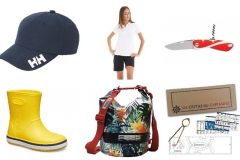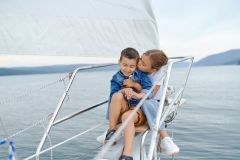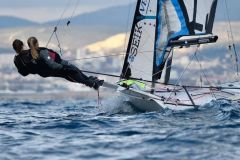Children's eyes particularly vulnerable to UV rays
In children, the crystalline lens is still immature and filters ultraviolet rays far less effectively than an adult eye. Up to 70% of UVA rays can reach the retina. This phenomenon is amplified by the marine environment, where water, sand and the gelcoat of boats intensely reflect sunlight. When sailing, exposure is therefore twice as high as on land, through both direct radiation and reverberation.
The consequences of sun exposure are not trivial. Not only can children develop redness, conjunctivitis and photokeratitis (sunburn of the cornea), but they also have an increased risk of developing eye diseases in adulthood, such as cataracts or AMD, a chronic disease of the central zone of the retina. Protecting a child's eyes at sea means ensuring long-term visual health.
A must for first-time sailors
As soon as a child sets foot on a deck, he or she is exposed. Whether on a sailboat, dinghy, tender, paddle or windsurfer, light conditions at sea are often extreme, even on cloudy days. Unlike clothing, which you adjust according to the weather, sunglasses must become a permanent reflex as soon as you set sail.
Many pediatricians and ophthalmologists agree that visual protection is essential from the age of 6 months. In practice, we recommend that children wear glasses as soon as they are able to keep them on their nose, i.e. around 12 months.
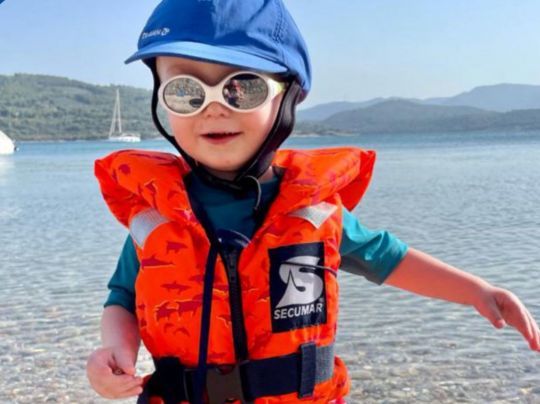
How to choose the right sunglasses for children at sea?
Maximum UV protection
The number-one criterion is the UV filter category. It's essential to opt for category 3 or 4 lenses, which guarantee optimum protection against UVB and UVA rays. Category 4 is the most filtering, but it's forbidden for driving, which in this case doesn't apply to our toddlers. For exclusively nautical use, it's ideal.
Check the CE mark and look for models certified to EN ISO 12312-1, a guarantee of UV filtration quality.
Unbreakable, hard-wearing lenses
Choose lightweight, unbreakable polycarbonate lenses, ideal for on-board play, falls, bumps against the deck or vest. Some models feature anti-scratch or anti-fog coatings, useful when children are sweating or when glasses get wet.
A frame adapted to children's morphology
Frames must be flexible, ergonomic and wraparound, to prevent rays from passing through the sides. Many brands offer comfortable, highly resistant TPE-E models. An elastic headband or adjustable strap keeps the glasses firmly on the head, even when sailing.
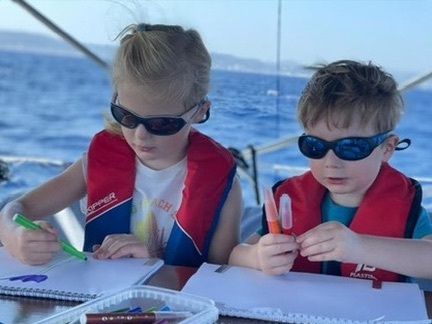
Some of the brands and models favoured by parent sailors
Among the best-known brands, Julbo (Loop, Solan or Frisbee ranges), Ki ET LA and Babiators offer robust, fun and certified models. Julbo even offers photochromic lenses that adapt to ambient light, a considerable plus for children who alternate between deck and cabin.
And what about the look? How do you get them to accept
We know: convincing a child to wear glasses can be a challenge. The trick is to choose a model he or she will want to wear. Bright colors, fun patterns, design " like Mom and Dad "It's all part of making wearing glasses a natural thing to do. Don't hesitate to involve your child in the choice. An on-board mirror can even become a game!
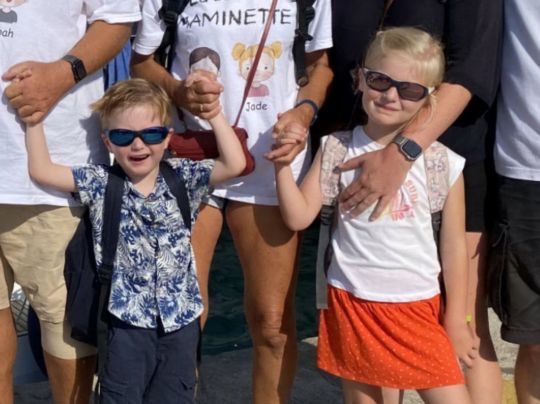
Not just a matter of looks, but safety equipment in its own right
Sunglasses are not a gadget, nor a fashion accessory, but a piece of safety equipment, just like a lifejacket. When out at sea, they should be as automatic as a cap or the protection of SPF 50+ sun cream. For the youngest sailors, they should be part of every sailor's checklist.
Whether you're sailing on a lake, on a coastal cruise or out on the open sea, children's eyes deserve the utmost vigilance. Investing in a good pair of sunglasses gives them the comfort and protection they need to discover the sea in safety and style.

 /
/ 